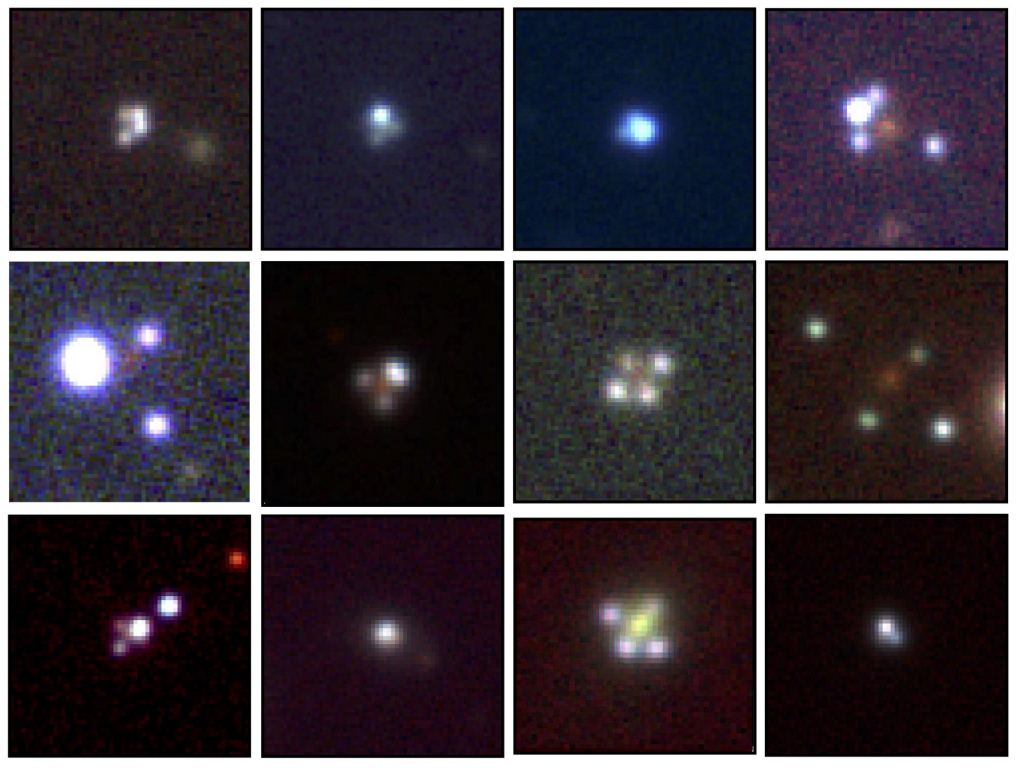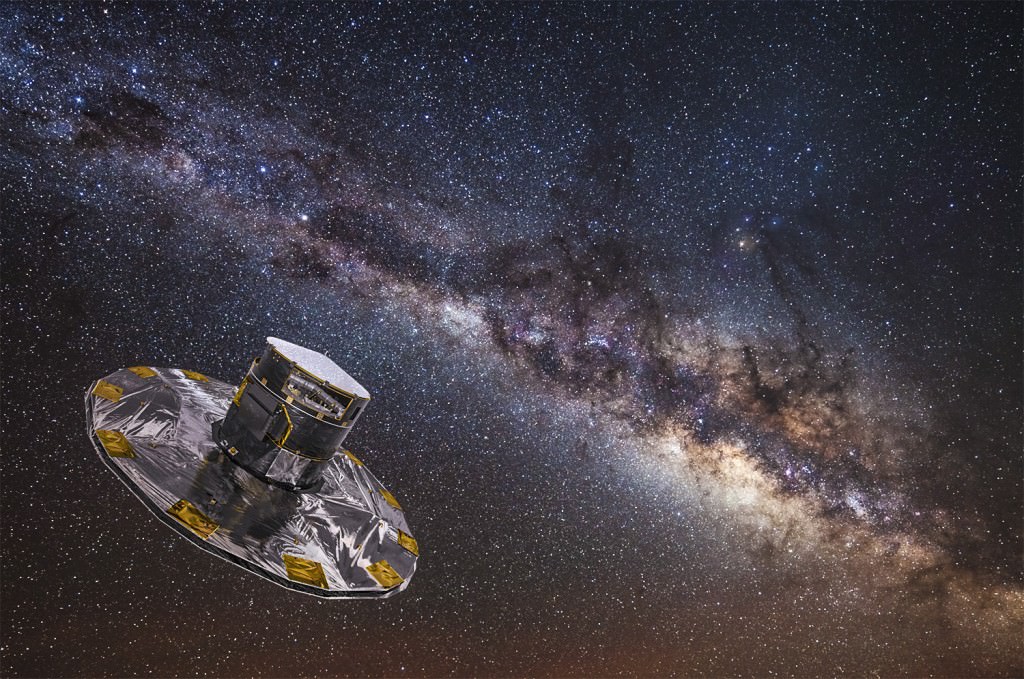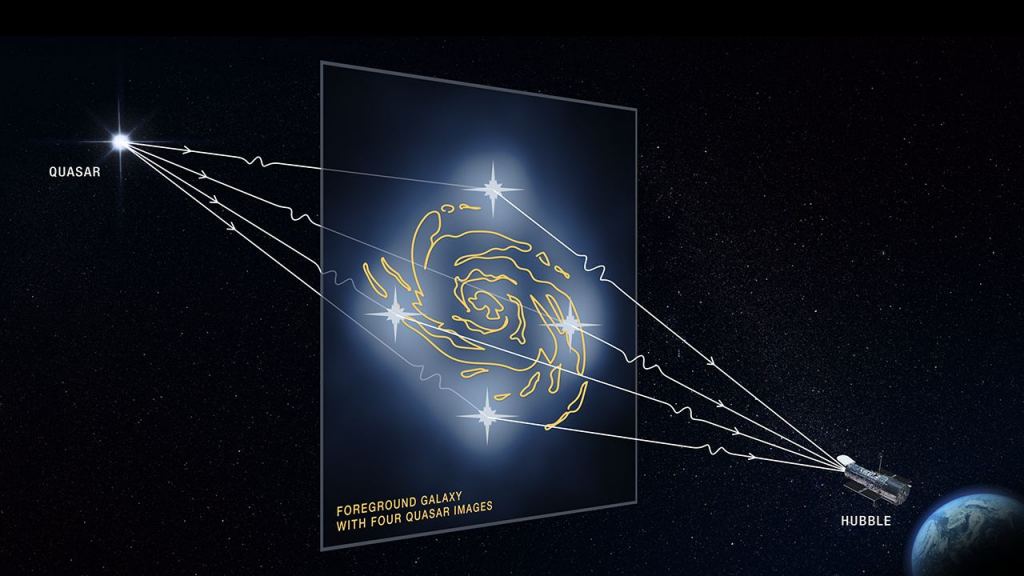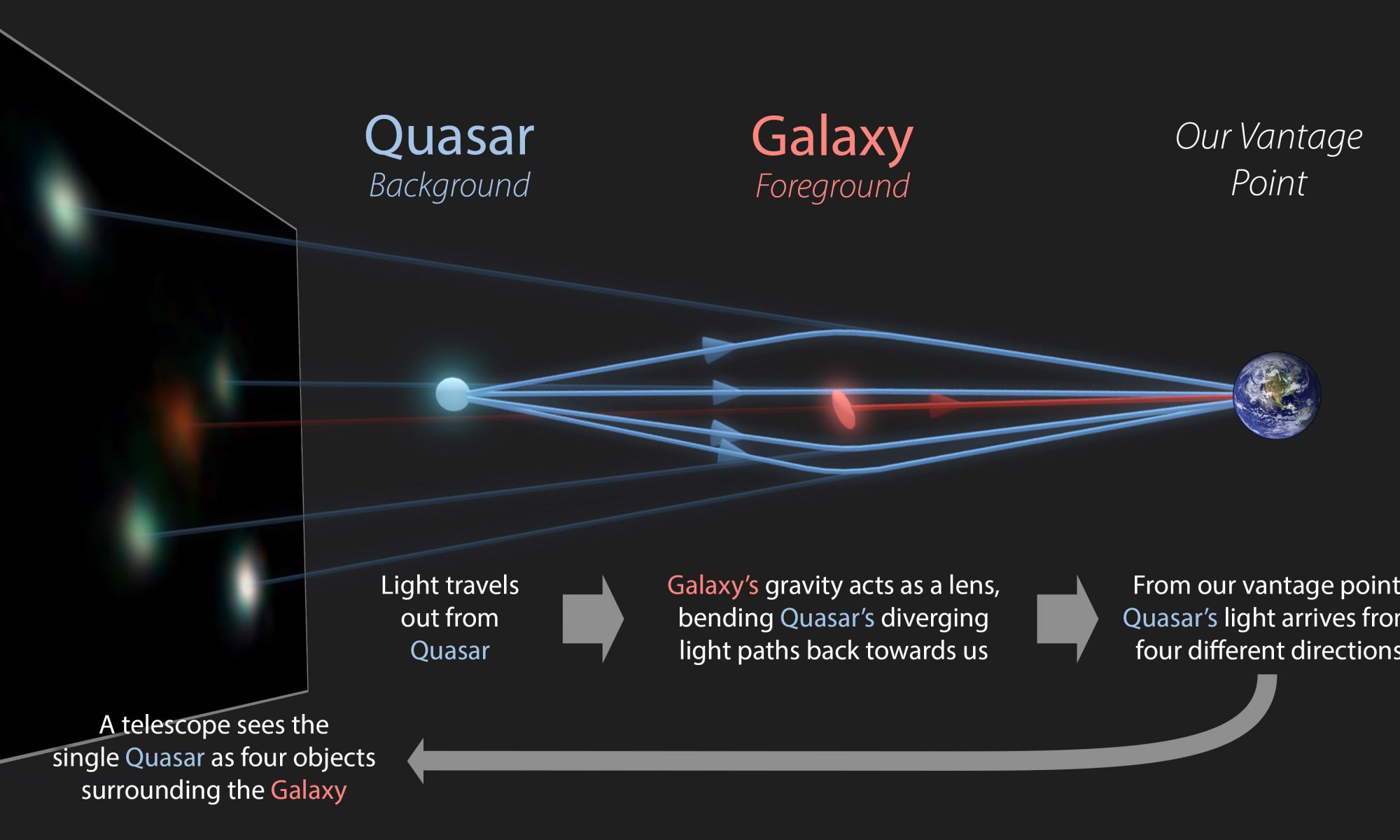In 1915, Einstein put the finishing touches on his Theory of General Relativity (GR), a revolutionary new hypothesis that described gravity as a geometric property of space and time. This theory remains the accepted description of gravitation in modern physics and predicts that massive objects (like galaxies and galaxy clusters) bend the very fabric of spacetime.
As result, massive objects (like galaxies and galaxy clusters) can act as a lens that will deflect and magnify light coming from more distant objects. This effect is known as “gravitational lensing,” and can result in all kinds of visual phenomena – not the least of which is known as an “Einstein Cross.” Using data from the ESA’s Gaia Observatory, a team of researchers announced the discovery of 12 new Einstein Crosses.
Put simply, an Einstein Cross occurs when light from a distant object (in this case, a quasar) is so strongly deflected by foreground galaxies that it appears to the observer as four distinct images. While Einstein had already predicted this effect as early as 1912, the first double image of a lensed quasar did not occur until 1979. By 1985, about 50 Einstein Crosses were discovered in total, only one of which was a quadruple image.

The research was conducted by the Gaia Gravitational Lenses working group (GraL), an international collaboration with members from Australia, Brazil, India, Europe, and the USA. Francois Mignard, an astronomer with the University of Côte d’Azur in France and a member of GraL, addressed the challenges of studying Einstein Crosses in a recent ESA press release.
“Finding new ones is difficult, because we have no clue where to search for them exactly,” he said. “It requires high spatial resolution imaging just to locate candidates.” The ESA’s Gaia mission, which launched in 2013, is a game-changer in this field because of its unprecedented spatial resolution and ability to survey the whole sky every few months.
Using a series of special machine learning algorithms, the team searched through the second Gaia Data Release 2 (Gaia DR2) to find candidates for strongly lensed quasars. “Then we needed to confirm that the four closely packed images were not a pure chance alignment of four independent sources, but really four images of a single, distant source, lensed by an intervening galaxy,” said Christine Ducourant of the University of Bordeaux.
Since Gaia’s spectral and visible light (photometric) measurements are not yet published, the team relied on photometry obtained by NASA’s Wide-field Infrared Survey Explorer (WISE) to pre-select the most promising candidates for follow-up spectroscopic observations. This was then performed using the Low Resolution Imaging Spectrometer (LRIS) on the Keck I telescope and the Palomar Double Spectrograph (DBSP).

These observations confirmed that the 12 candidates they identified were quadruply-imaged quasars, which effectively increases the number of known Einstein Crosses by close to 25%. In the future, having more multiply-imaged lensed quasars available for study will give astronomers additional opportunities to test important cosmological parameters.
These include the current rate at which the Universe is expanding (which could reveal insights into the role of Dark Energy) as well as the distribution of Dark Matter in foreground galaxies. As Alberto Krone-Martins – an astronomer and a lecturer in informatics at the University of California, Irvine, and the Center for Astrophysics and Gravitation at the University of Lisbon – explained:
“Quasars are intrinsically variable objects, and because the light in each lensed image has crossed different paths in the Universe, fluctuations in the quasar’s light show up in the images at different times. From this it is possible to estimate the Hubble-Lemaître constant.”
“Based on general relativity and the distribution of matter in the galaxy, we can predict where the images of the lensed quasar should be. The difference between what we predict and what we observe, tells us something about the properties of different dark matter models.”

Performing these kinds of measurements requires that further follow-up observations are conducted in the optical, radio, and X-ray wavelengths, which are currently underway. The GraL working group expects that upcoming Gaia data releases – like the Early Data Release 3 (EDR3), which was made available on December 3rd, 2020 – will allow for more Einstein Crosses to be identified. As Ducourant added:
“After the final data release, we hope that Gaia will discover hundreds of these sources. Thanks to Gaia and the collaboration between machine learning, space and ground-based observations, we are getting more and more effective at finding these unique objects.”
Their findings recently appeared online and have been accepted for publication in The Astrophysical Journal.
Further Readings: ESA


While I understand gravity bending the light around the closer object, I don’t understand why there are four images instead of a complete ring around the lens? I’ve never seen an explanation of this and maybe it’s too complicated to easily explain, but I can’t help but wonder.